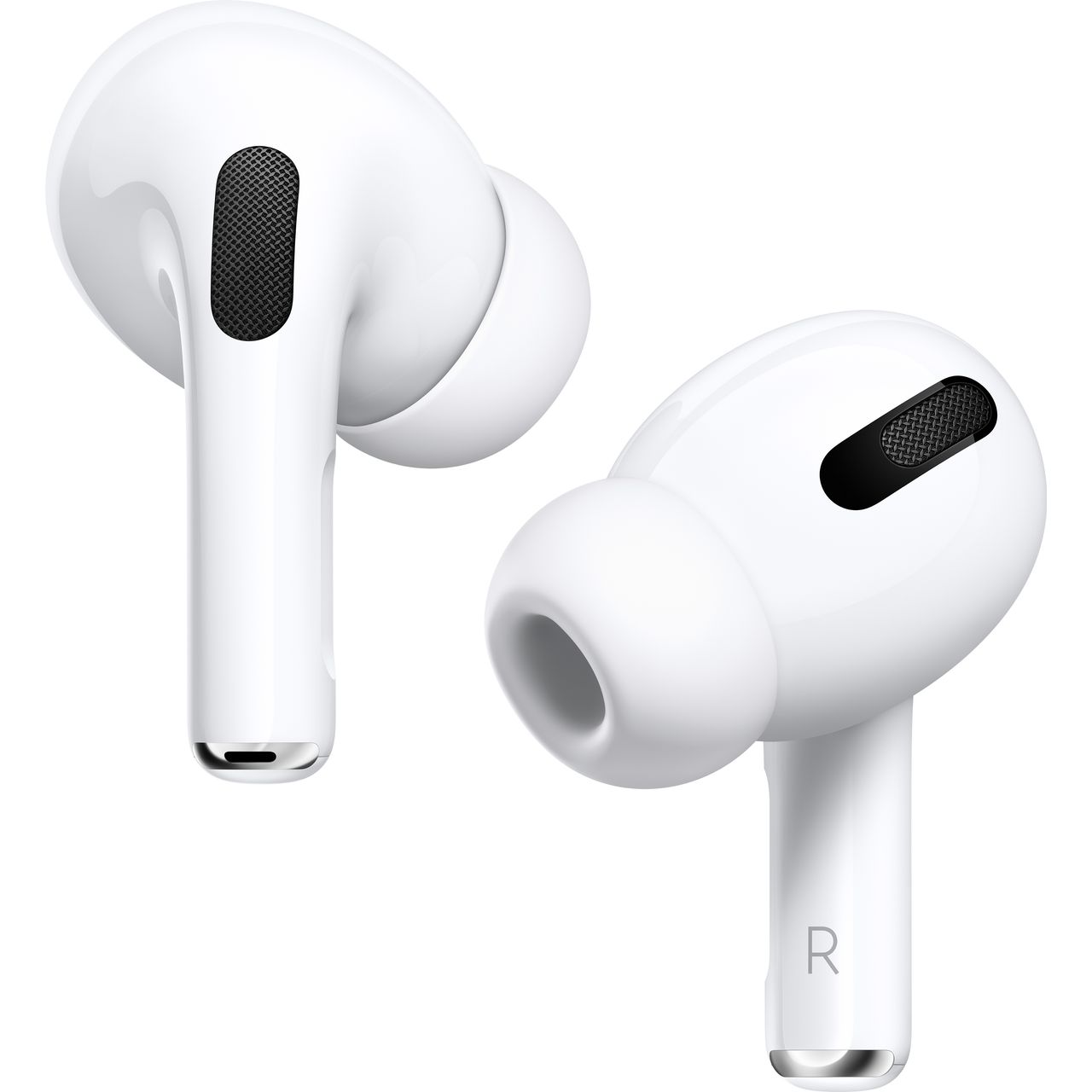Apple AirPods Pro With Wireless Charging Case -White
In-ear headphones – compact & great for use on-the-go. Bluetooth connectivity with 4.5 hours of battery life. Active noise cancelling blocks out external sound. Play, pause & skip tracks by squeezing the force sensor.
Enjoy high-quality music wherever you are with these AirPod Pro earbuds from Apple. Whether you’re on the morning commute or a late night jog, the in-ear design makes them perfect for life on-the-go. And, as they’re completely wireless, you won’t have to waste any time in your day de-tangling the cables, while the 4.5-hour battery life means they’ll play for your full journey. Active noise cancelling technology will block out the hustle and bustle around you, letting you fully focus on your tunes. Or, when you need to listen out for a travel announcement on the train, you can activate transparency mode, which allows any outside noise in. Plus, skipping or pausing a track is super-simple with gesture controls or Siri.
- In-ear headphones – compact & great for use on-the-go
- Bluetooth connectivity with 4.5 hours of battery life
- Active noise cancelling blocks out external sound
- Play, pause & skip tracks by squeezing the force sensor
- Stay aware of your surroundings with transparency mode
Additional information
| Dimensions | (H)4.5 x (W)6.0 x (D)2.1 |
|---|






by Yonas
I like the size, how it fits in my ears and the quality of sound.
by David
One of the best purchases I have ever made, excellent sound quality, fast charging, best price on the web too and very quick delivery. Thanks!
by Steven
Been using them for a few weeks now and I think they are amazing product and the noise cancellation is wonderful it blocks out all the unwanted people and noise around u and watching a movie are a tv show on your phone with Dolby atmos active is amazing.
by Rabiul
Great product!! Would recommend.
by Denzel
Awesome pair of earphones with great features, nice cancellation and transparency mode are nice additions. Sound great.
by David
Best earphones I’ve ever purchased. As someone with a history of not quite having the ear shape for ear buds, I was sceptical these would work. For the first time in my life, they really do fit so well, in a way I didn’t expect. The sound is also impressive. The transition to noise cancellation and transparency is seamless. All in all a very worthy pair of ear phones